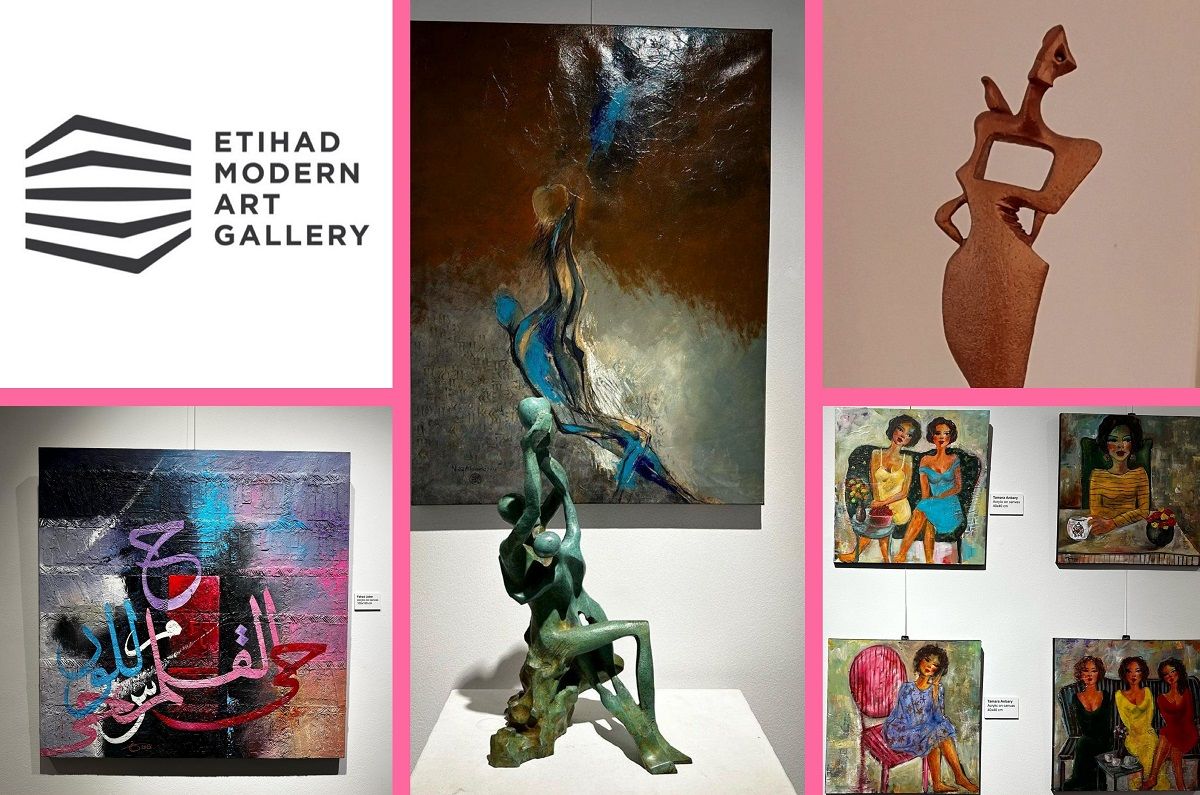An Account Regarding Social Advantages of Middle Eastern Women in Etihad Modern Art Gallery

It is a group show with works by renowned and up-and-coming Middle Eastern artists, showcasing a wide assortment.
iranart: Mahmood Nouraie: The summer exhibition "Fruit and Women" is being held at the Etihad Modern Art Gallery in Abu Dhabi. It is a group show with works by renowned and up-and-coming Middle Eastern artists, showcasing a wide assortment.
These pieces are part of a series that focuses on modern perspectives on women in the region and the skills that Middle Eastern women have for producing works of art, Individuals like the Emirati artist Azza Al Qubaisi, who specialises in volumetric works and sculpture. She has demonstrated her talent and made an effort to use sculpture and decorations to foster a modern conversation in the area.
Another strategy used by the "Fruit and Women" exhibition is to pay attention to the social rights of women in the area. This tactic aims to show the audience the social outcomes of women's activities or the aesthetic manifestation of their desires.
An excellent instance is the artwork of Iraqi artist Tamara Anbary, who uses various materials like cloth, paper, and wood to depict the psychological state and desire to explore in her works while using an
impressionistic and occasionally expressionistic approach to her human characters.

The burgeoning artist wants to reflect women in her works by observing and researching the ways that they develop and change in the area. In Anbary's art, women are seated in front of the audience, demanding justice while carrying modern items like cell phones, handbags, and vehicle keys. The women in her artworks are her own, and they are arranged in various ways to depict the civilised bravery of the local women.
Nabeel Ali, a fellow national of Anbary's, draws women that have a mystical quality despite being a man. He attempts to connect the significance of women in the past as ambassadors of life to the mental world of today by using expressionistic language to allude to the audience.

Another Iraqi artist, Natiq Al Alousi, attempted to depict the legendary status of women with shape in the exhibition through the arrangement of his paintings and sculptures. In the twisting of the male form in his volumetric work, a woman lifts her hand to grasp the existence that the male form appears to be holding in his hands.

The unique pieces in the exhibition, though, may be those by Madhat Kakei, an abstract artist from Iraq whose monochrome, deeply meaningful works consistently represent the sorrow of his native country and life in the Middle East. He has now depicted the joys and sufferings of women in this area through his work.

Similarly, Magdy El Kafrawy, an Egyptian artist, chose the styles of attire, ornaments, and cultural traditions that were passed down with them as his topics when creating his works of art on women, particularly women in the Middle East.

Muhanad Al Nasiry also uses hand sketches of urban environments in his designs, combining them with watercolour and digital processing techniques to produce stunning pieces. Despite the absence of people in his works, they depict the lack of women in their gloomy surroundings.

Mohamed Elkattan also created a sculpture of a female body with a bird perched on her shoulder and her chest open to the modern world.

Salah Hithani, on the other hand, creates collages that are full of mystery that are inspired by the world of women.

But without a question, the most distinctive piece in the exhibit is one by graphic designer and calligrapher Fahad Jaber. It stands out aesthetically and highlights the visual merits of the work.


